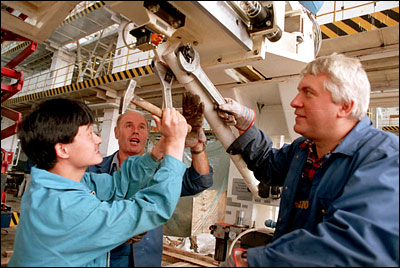Before 1978, state-owned and collectively-owned enterprises represented 77.6 percent and 22.4 percent respectively of China's exclusively public-ownership economy. The policy of reform and opening-up has given wide scope to the common development of various economic sectors. Individual and private industrial enterprises and enterprises with foreign, Hong Kong, Macao or Taiwan funding have mushroomed.

Reform of state-owned enterprises has always been the key link of China's economic restructuring. The Chinese government has made various attempts to solve the problem of chronic extensive losses in this sector and by now almost all state-owned enterprises have adopted the company system. After being transformed into joint stock companies, the economic benefit of the state-owned enterprises increased steadily and their overall strength and quality were remarkably enhanced, gaining continuously in their control, influence and lead in the whole national economy. In 2005, of the industrial added value created by all state-owned industrial enterprises and non-state industrial enterprises with annual turnover exceeding five million yuan, state-owned and state stock-holding enterprises accounted for 39.2 percent, collectively-owned enterprises 3.9 percent, the rest taken up by other non-public enterprises, including enterprises with foreign, Hong Kong, Macao or Taiwan investments, and individual and private enterprises. The result is a dynamic juxtaposition of multifarious economic elements.
In 2005, of the Chinese enterprises ranking in the world's top 500, the 15 China mainland enterprises were all state-owned. Of China's own top 500 enterprises, the majority were state-owned and state stock-holding enterprises, the main force of the Chinese economy, with turnover amounting to 86 percent of GDP. Non-state enterprises have become the main driving force for industrial sectors, the non-state economy accounting for 50 percent in 27 of the 40 industrial sectors, more than 70 percent in some sectors.
